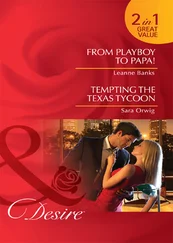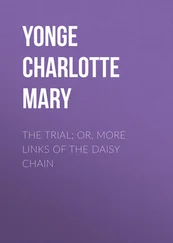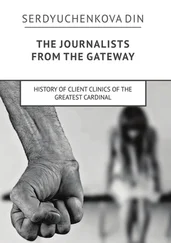Public hangings very probably originated as a sacrificial rite and their concealment in many ways restored the mystery that a century of rationalism had threatened to dispel. For the most immediate effect, just as abolitionists had feared, was to stabilize an institution that had at certain points in the early 1800s begun to seem very wobbly indeed. British hangmen would continue secretly to snap necks for another century. In the United States, where men and women are still poisoned and gassed in hidden chambers, popular support for the death penalty may well be stronger than it was two hundred years ago.
But the change also had another consequence – for as the punishments that had exemplified Western justice for centuries vanished, criminal trials assumed a more prominent position than ever before. New York produced America’s first true-crime journal, the National Police Gazette , in 1845 – a decade after its legislature did away with public hangings – while the Illustrated Police News first hit London’s news-stands in 1864, just four years before Britain’s Parliament followed suit. A similar shift was seen elsewhere in Europe. In Prussia, the first German state to end public executions, the same statute that relocated the beheadings to prison yards in 1851 opened the kingdom’s trials to the public. Equivalent laws did the same throughout the rest of Germany over the next three decades, and by the end of the century day trips to court had become a popular pastime among middle-class families across the country.
In France, the story was a little different. The legal reforms that followed the Revolution of 1789 threw its courts open to the public and guaranteed defendants a right to counsel. They also gave ordinary citizens a role in judging criminal cases, creating a form of the jury that spread, through cultural influence and Napoleonic campaigns, from Madrid to Moscow over the next three-quarters of a century. The country bucked the penal trend by continuing to stage public executions right up to 1939, later than any other country in the Western world, but its experience of publicity also exemplified the growing significance of the criminal trial.
Over the course of the eighteenth century, France’s liberal thinkers had developed a deep admiration for the transparency of English criminal justice. ‘In England no trial is secret,’ Voltaire had explained in an impassioned attack on the inquisitorial system in 1762, ‘because the punishment of crime is meant to be a lesson to the public…and not vengeance for one person. Witnesses testify in open court and any trial of interest is reported in the newspapers.’ Attitudes towards the jury itself had always been considerably more equivocal however, and French jurists were very soon having second thoughts about its wisdom.
In 1804, soundings were taken from seventy-five courts across the nation as to whether juries should be retained. The Anglophilia of men like Voltaire was a thing of the past – not least, because France was at war with Britain – and the fifty-two jurisdictions that replied were split precisely in half. One court that expressed an especially firm non was that of Doubs. Jury service, argued its judges, was a task that could appeal only to citizens as primitive as those of England. ‘At the theatre, the Englishman only cares for ghosts, lunatics, dreadful criminals and drawnout murders; he scurries to animal fights, and probably regrets the passing of gladiatorial contests,’ they observed. ‘Who can tell if he does not seek the functions of a juror for the pleasure of watching a criminal struggling with his conscience, with the death that awaits him? The Frenchman, on the contrary, is delicate in all his tastes; he flees from any sight which could disagreeably awaken his sensitivity; could he take any pleasure in wielding the bleeding sword of justice?’
The assessment was an audacious one. Frenchmen had just guillotined thousands of their compatriots, and possessed such enthusiasm for the bleeding sword of justice that they would watch its blade rise and fall in public for another 135 years. The sight of squirming criminals was also doing little to repulse them: the world’s first newspaper dedicated exclusively to court reporting, the Gazette des tribunaux , was launched within months of the 1791 law that had thrown open the doors of France’s trials. But the judges of Doubs were chauvinistic rather than simply wrong. Prurience had always been potential in English trials, even if its source had been publicity rather than juries. And as France moved from inquisitorial secrecy to routine openness, it would take to the voyeuristic pleasures of the courtroom with delight.
France’s cities, like others throughout mainland Europe, were soon making strenuous efforts not merely to accommodate a growing popular interest in courtrooms, but to promote it. ‘Palaces of Justice’ were built across the country during the nineteenth century: newfangled monuments to open justice, packed to their triforia with crucifixes, statuary, and all the trappings of tradition that its absence could demand. As congregants flocked in, it became increasingly common to issue tickets in order that the classes and sexes could be properly segregated – a development simultaneously seen in England – and the trials of lowlifes were soon pulling in the haut monde. The December 1869 prosecution of Jean-Baptiste Troppmann for multiple murder inspired particular interest. His case had been intriguing Parisians from the moment that the six victims had been laid out behind plate glass at the city morgue three months before, and more than twenty thousand applications were made for admission passes. Only several hundred were lucky enough to make it into the trial chamber, a magnificent judicial temple inaugurated just a year before, but few who did so would have been disappointed. For three days they trained opera glasses on the dock, perhaps picking up clues from Troppmann’s physiognomy, and pondered the table that dominated the room – spread with bloody garments, blades, and a jar swimming with the stomach contents of one of the deceased. Aristocrats, socialites and workers attended in force, and so many women were present that Le Petit journal marvelled how ‘strange’ it was that ladies ‘raised in velvets, lace, and silk’ should display such ‘mad unbridled passion…for the coarse details and repugnant debates’ of the case.
That particular concern was widely shared. When Adelaide Bartlett stood trial at the Old Bailey in 1886 for chloroforming her husband – in a case involving a love triangle and liberal condom use – the judge publicly condemned the relish of women in the public gallery for evidence that he and the jurors could hear only with shame. By 1896 one French doctor was expressing not only distaste, but fear. The libertines of fin-desiècle France had developed something of a vogue for throwing acid into their lovers’ faces, and Paul Aubry proposed that even reading about a vitrioleuse might be enough to launch the female reader (who was ‘often not very intelligent’) on some passionate mischief of her own. ‘What else does she need to excite [her] imagination?’ he asked rhetorically. ‘It is easy to throw vitriol at someone [and] one is sure to be acquitted and to be the subject of gossip for forty-eight hours.’
But whatever the other moral consequences of the intensifying courtroom drama, the Troppmann trial suggested that the weaker sex was made of rather sterner stuff than their would-be protectors realized. Following the defendant’s conviction, several distinguished Parisiennes wrote to Le Figaro to complain that the newspaper’s correspondent had not acknowledged their presence at court. René de Pont-Just, though as suspicious of female spectators as the next man, was at least capable of irony. He drily explained that the courtroom audience had included ‘both ladies and women’ and that he had held his tongue for fear of confusing the danses with the femmes.
Читать дальше
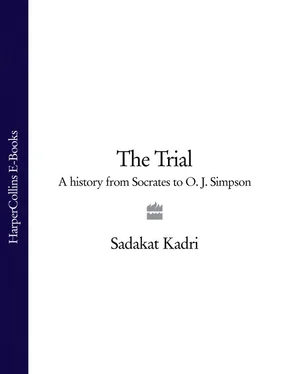

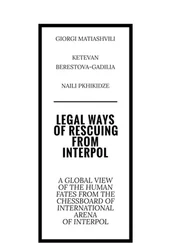

![Theresa Cheung - The Dream Dictionary from A to Z [Revised edition] - The Ultimate A–Z to Interpret the Secrets of Your Dreams](/books/692092/theresa-cheung-the-dream-dictionary-from-a-to-z-r-thumb.webp)
